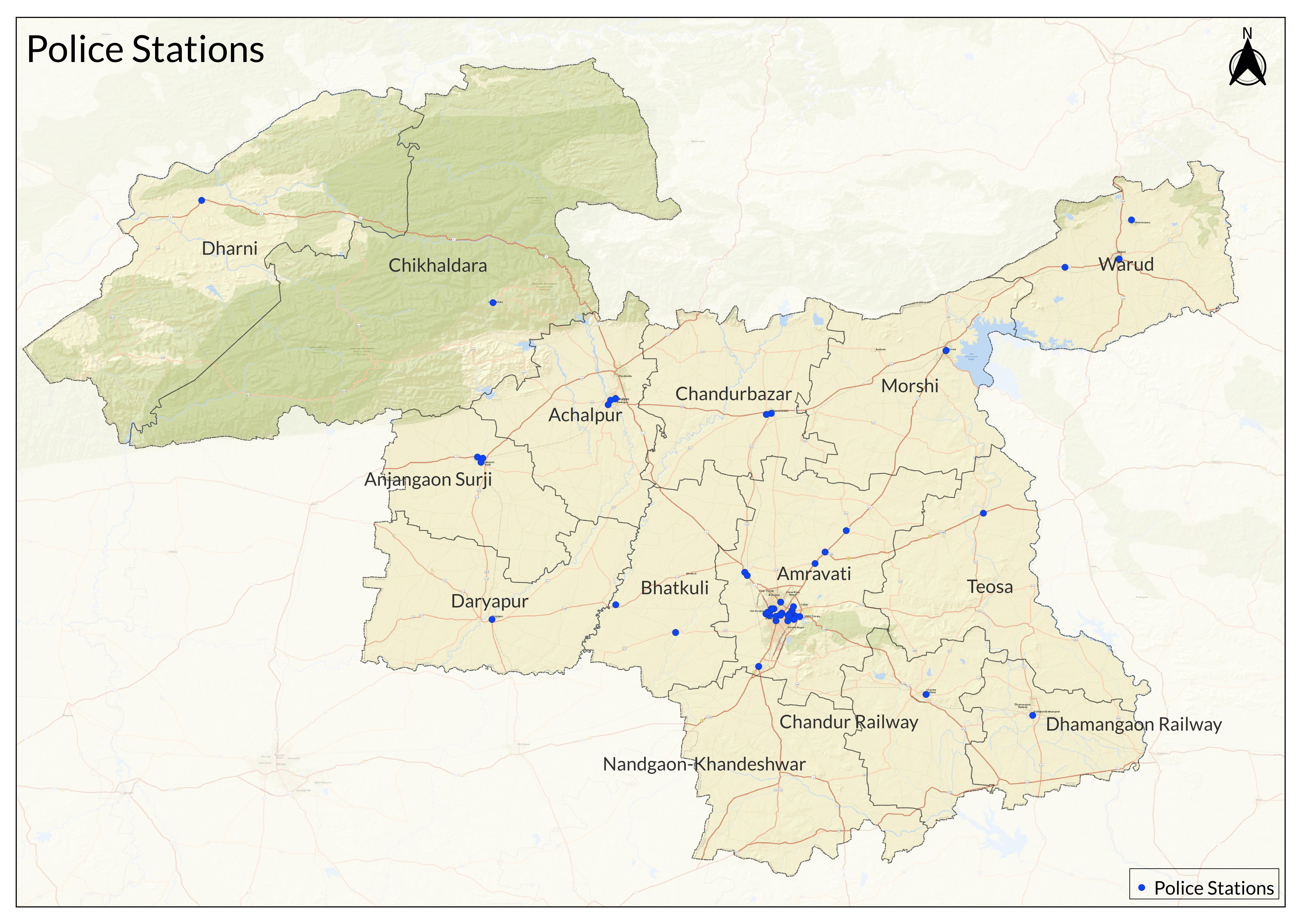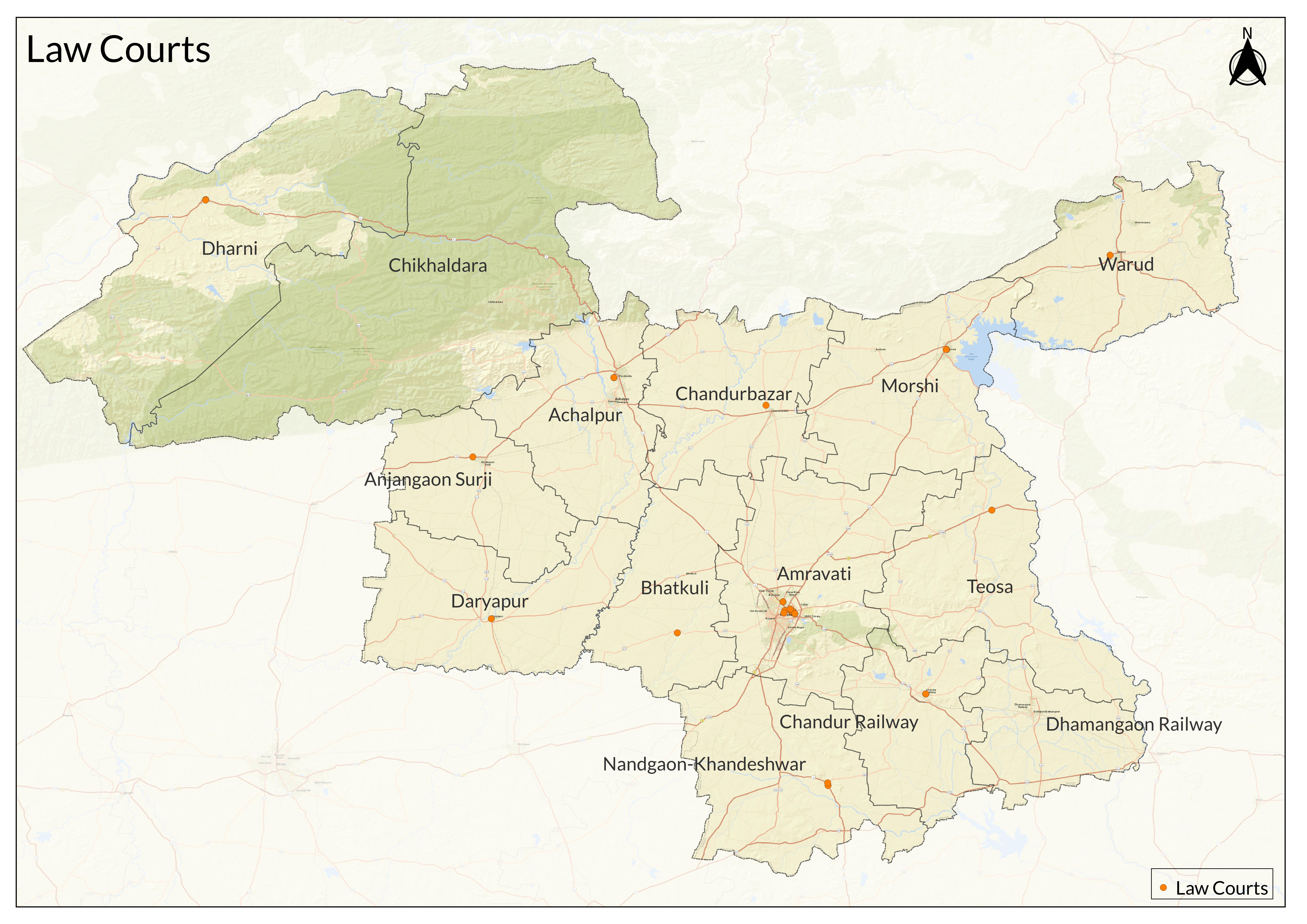Contents
- Jail System
- Graphs
- Criminal Cases
- A. Cognizable Crimes under the Indian Penal Code (IPC)
- B. Select Offenses affecting the Human Body
- C. Select Offenses against Property
- D. Select Offenses against Public Tranquility
- E. Select Offenses relating to Documents and Property Marks
- F. Select Miscellaneous Crimes under the IPC
- G. Cognizable Crimes under Special and Local Laws (SLL)
- H. Select Offenses under Special and Local Laws (SLL)
- I. Crimes against Women
- J. Select Cases of Crimes against Women
- K. Cyber Crime
- L. Select Cases of Cyber Crime
- M. Cases of Fraud
- N. Reported Crimes against Women and Children
- Police Infrastructure and Workforce
- A. Police Infrastructure
- B. Police Officers and Employees
- Judicial System
- A. Number of Functioning Courts
- B. Judge Positions
- C. Cases Resolved
- D. Number of Original Cases Resolved
- E. Number of Appeal Cases Resolved
- Sources
AMRAVATI
Police & Judiciary
Last updated on 5 November 2025. Help us improve the information on this page by clicking on suggest edits or writing to us.
The Amravati Police maintains a well-organized network of stations across urban and rural areas to ensure effective law enforcement. In 1998, the Amravati District Police was divided into two units: Amravati City Police, handling urban areas, and Amravati Rural Police for rural regions. This division improved efficiency in addressing region-specific needs.
Amravati City Police oversee two talukas—Amravati and Bhatkuli—and operate ten police stations, covering urban centers and some rural areas like Nandgaon Peth, Bhatkuli, and Walgaon. The stations are grouped into three subdivisions: Frezarpura, Rajapeth, and Gadge Nagar, for better coordination.

In addition to general policing, specialized units handle crime prevention, traffic management, cybercrime, and maintaining order during large gatherings. Police stations in key areas help ensure public safety, especially in zones with significant economic activity. Locally, policemen are often called “bhau” (brother), “kaka” (uncle) by children, “police buwa” in casual speech, and “saheb” remains a common respectful address for officers.
![Asegaon Police Station[1]](/media/statistic/images/maharashtra/amravati/police-judiciary/asegaon-police-station1-737a3658.png)
Jail System
Amravati Central Jail, established in 1886, has historical significance. It has been used during the British colonial period, and during India’s independence movement, it was one of the many jails where freedom fighters were held by the colonial authorities. The jail also carries historical significance in terms of its architecture and its role in shaping Maharashtra's penal system over the years
Amravati Central Jail has also housed notable inmates throughout its history. One such figure is Laxman Narayanarao Nathe, a prominent freedom fighter. Born in 1895 in Shindi Budruk, Achalpur taluka, he was a key figure in the struggle against British colonial rule in India. Initially imprisoned at Amravati Central Jail, he was later moved to Jabalpur Central Jail. Nathe actively participated in significant movements, such as the civil disobedience movement of 1930 and the Jungle Satyagraha.
During his time in prison, he was assigned prisoner number 902, a symbol of his resilience. His activism resulted in a six-month hard labor sentence due to his protests against oppressive laws. Even while incarcerated, he continued to communicate with his supporters through letters known as "Kaidi Ki Chitthi," which were carefully monitored by prison officials..

Graphs
Criminal Cases
Police Infrastructure and Workforce
Judicial System

Sources
Amravati Rural Police. Amravati Rural Police. amravatiruralpolice.gov.in.https://amravatiruralpolice.gov.in
Amrit Mahotsav, Contributor: Dr. Shivaji Govindrao Mhaske (CCRT). "Laxman Narayanarao Nathe." amritmahotsav.nic.in, Amravati, Maharashtra.https://amritmahotsav.nic.in/district-reopsi…
Last updated on 5 November 2025. Help us improve the information on this page by clicking on suggest edits or writing to us.